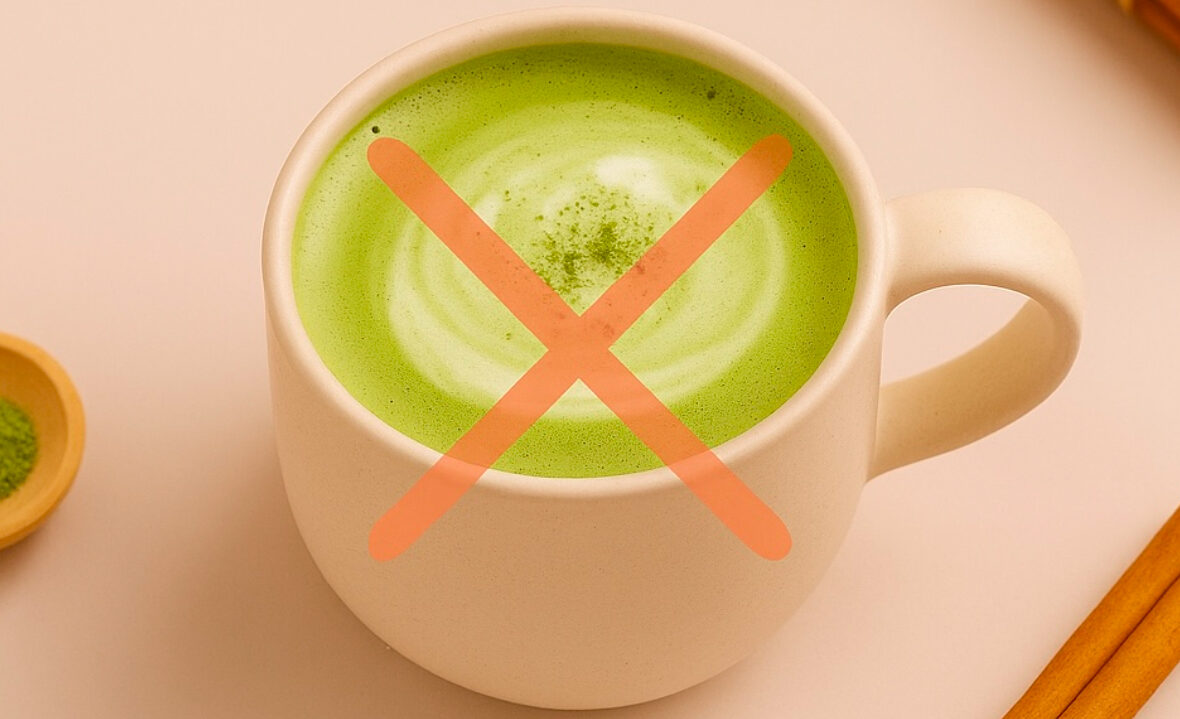
Matcha used to be my go-to drink. That first sip always hit just right. It was warm, earthy, and grounding. Nothing else compared. My husband and I were enjoying matcha long before it became trendy. About ten years ago, we were standing at Starbucks ordering it straight. No fancy milks, no sweeteners, just pure matcha powder shaken with water. We truly loved that bold, grassy taste.
For years, I felt good about choosing it. Every time I reached for a cup of matcha instead of coffee or soda, I believed I was making a better choice. It felt like something my body and mind would thank me for. But recently, I came across something that completely changed my view.
Matcha contains fluoride.
This is true for every kind of matcha, even the highest quality ceremonial grade powders from Japan. The levels can vary depending on the source, but all matcha contains some amount of fluoride. That was difficult to accept, especially since I’ve gone out of my way to avoid fluoride in other areas of my life. I don’t even use toothpaste with it. So finding out it was in my favorite daily drink felt like a big letdown.
Out of all the health facts I’ve learned over the years, this was the one I wanted to ignore the most. I tried to brush it off, hoping it wasn’t that serious. But deep down, I knew I couldn’t keep pretending. Being on a health journey isn’t about doing what’s easy or sticking to what feels good. It’s about staying open to new information, being willing to change, and growing through the process. Even when it’s inconvenient. Even when it’s not fun.
So what exactly is fluoride, and how does it end up in matcha?
Let’s get into that.
What Is Fluoride, and Why Is It in Matcha?
Fluoride is a naturally occurring mineral that’s found in soil, water, and certain foods. It’s widely added to public water supplies and dental products with the claim that it helps prevent cavities. But not everyone agrees it’s safe in the amounts we’re regularly exposed to.
When it comes to tea, the fluoride isn’t added in. It gets absorbed by the tea plant from the soil as it grows. The older the tea leaves are, the more fluoride they tend to pull from the ground. Since matcha is made from whole, ground tea leaves—especially more mature leaves—you’re consuming all of it, including the fluoride that’s been absorbed.
That’s very different from steeped green or black tea, where the leaves are removed after brewing. With matcha, nothing gets left behind.
Fluoride Levels in Teas (General Averages)
| Tea Type | Estimated Fluoride (per cup) |
| Matcha (powdered) | 4-6mg |
| Brewed Black Tea | 1.5- 3 mg |
| Brewed Green Tea | 1 – 2.5 mg |
| White Tea | 0.5 – 1.5 mg |
| Herbal Teas (non-camellia) | 0- 0.5 mg |
Note: Levels can vary based on the soil quality, region, leaf age, and brewing method.
For context, the EPA’s maximum fluoride level in drinking water is 4 mg per liter. That means a single cup of matcha could already put you at or near that daily upper limit.
Why It Matters
While fluoride is marketed as protective for teeth, it’s also classified as a cumulative toxin—meaning it builds up in the body over time. It’s been found to store in bones, the pineal gland, and even the brain. Some research has raised concerns about its connection to:
- Thyroid dysfunction
- Bone and joint issues
- Cognitive development problems in children
- Possible neurotoxicity in high doses
Knowing these facts made drinking matcha daily just not feel right anymore.
What I Drink Instead
Letting go of matcha was hard, but I’ve found a few comforting and nourishing alternatives that still give me that warm-mug, cozy feeling:
- Roasted dandelion root tea – earthy, rich, and great for the liver
- Herbal blends – like peppermint, ginger, lemon balm, or nettle
- Homemade turmeric lattes – with cinnamon, coconut milk, and a dash of honey
- Caffeine-free mushroom blends – like reishi or chaga mixed with homemade oat milk
These drinks not only taste good but actually support the body in different ways without adding to my fluoride load.
Final Thoughts
Giving up matcha wasn’t easy. It had become a small but meaningful part of my daily rhythm. I still miss the comfort of it sometimes. But once I had the facts, I couldn’t keep drinking it the same way. That doesn’t mean you have to make the same choice. Everyone’s journey looks different, and we all make decisions based on what’s right for us.
For me, this was a turning point. It reminded me that true wellness means staying informed, even when the truth is inconvenient. And that sometimes, choosing better means letting go.
If you’re on a similar path and learning things that challenge your habits – just know, you’re not alone.











Leave a Comment